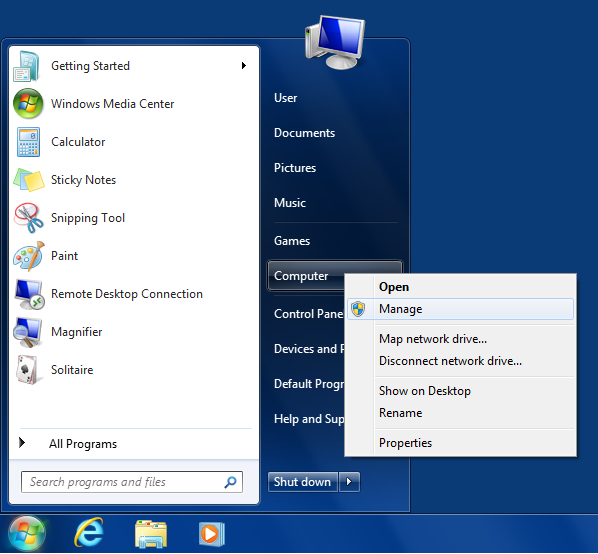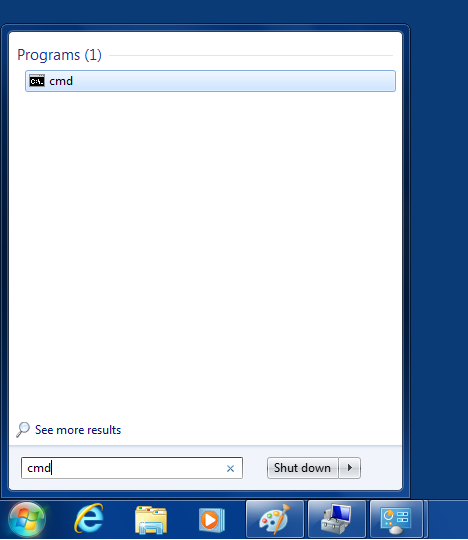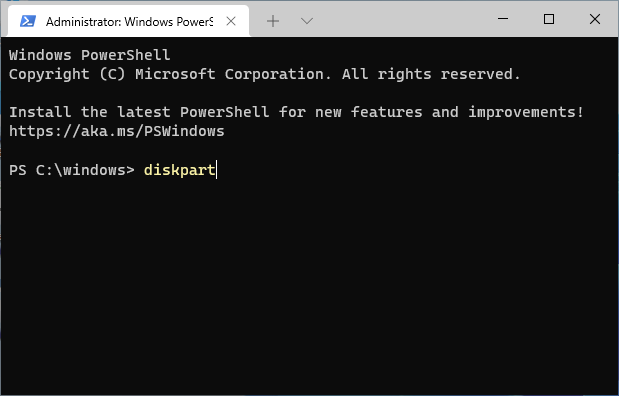How to delete a protected EFI disk partition with Windows 7 or 8
As
you probably know, in order to be able to store files on a hard drive,
it needs to be prepared just right: it needs to be initialized,
partitioned, and formatted just the right way. If you've bought an
external drive in a store, the preparation has probably been already
done by the drive manufacturer. However, what if you want the drive to
be prepared differently? For example, you may want to re-format the
drive, or change the partitions that it has. The way to do such tasks in
Windows is to use the Disk Management tool that comes preinstalled with
Windows.
To get to the Disk Management tool, click on the Start button, right-click on Computer, and choose Manage from the menu:

Wait, I have a Windows 8 computer that does not have the Start menu, what should I do, you might ask? It's an easy problem to solve: just install our tool StartFinity and you will get a full-featured Start Menu for your Windows 8 or 8.1 computer in no time at all.
Before you click on Manage, first things first: Disk Management is a very powerful tool, and with great power comes great responsibility!
If you are not very experienced with computers, you can look, but
better not touch and let someone more knowledgeable to do the job.
Because with Disk Management it's very easy to destroy your partitions
and lose your files, if you don't know what you are doing.
After you've clicked on Manage, wait a few seconds for the Computer
Management console to open. Select Disk Management in its navigation
page and wait a few more seconds. Finally, the list of the disks that
are attached to your computer will be displayed in its main window pane:
In our case, the
60 GB disk (shown as 55.89 GB disk in the list) is Disk 4 (let's
remember this number, we will need it a bit later.) It has two
partitions, one is a 200MB EFI partition that has no drive letter
assigned, and another NTFS partition of the size 55.69 GB, that has the
label test and
the drive letter F:. Although these two partitions looks similar, they
are treated very differently by Windows. If you right-click on the
normal NTFS partition, you should see the normal menu that lets you
perform various tasks on that partition, including the Delete Volume
command:The
most important thing when using the Disk Management tool is to make
sure you can identify the disk you want to manage in the list. Usually
you can do it by the total size of the disk displayed, although it may
be confusing. For example, in this example, a hard drive that's marked
as 60 GB drive by the manufacturer, is shown to have only 55.89 GB
by Windows. (Apparently, the disk manufacturers and Windows have a
different understanding of what a "gigabyte" is.) Also, if you have
several disks of the same size attached, it may get even more confusing.
If in doubt, better unplug all external drives except for the one you
actually want to work with, to make sure you are not accidentally
erasing data on a wrong disk!

However, if we right-click on the first EFI partition, the menu we get is completely disabled:

As you can see, the partition is protected in such a way that even the
powerful Disk Management tool cannot do anything to it. Note that it's
not because the partition is EFI, it's because the tool that created
that partition had marked it in a way that prohibits other tools to
tamper with it. (That's usually the case for the system hard disks
formatted on the Mac computers.) However, what if we want to delete such
a partition and re-initialize the disk from scratch?
While the Disk Management tool is helpless in this situation,
fortunately Windows offers yet another tool, DISKPART, that can do
things to the disks that Disk Management can't. The tricky part is, that
DISKPART is a command-line tool, that requires us to type commands into
its command prompt to make it do what we want.
To get access to the DISKPART tool, first let's open the Windows command
prompt in the "administrator" mode. We can do that by clicking the
Start button and entering cmd in the search box:

Make sure that cmd is highlighted on the menu above, but do not
press the Enter key yet! Instead, press the Ctrl and Shift keys
together, and while keeping them depressed, press Enter. The Ctrl+Shift
combination makes the command prompt to open in the "administrator"
mode. To start the DISKPART tool, enter the diskpart command into the command prompt window:

This should display the DISKPART command prompt. The first command we should use is list disk that should display the list of the disks currently connected to the computer:

 Again,
it's very important to properly identify the disk we want to work with
in the list. Our 60 GB disk is still listed as Disk 4 with the capacity
55 GB. Once we are sure that this is the disk we want to re-initialize,
we need to select it, by entering the command select disk 4 (yes, that's how selection is usually done when using the command line tools!). Then, let's use the list disk command again, to confirm that the disk in question is indeed now selected:
Again,
it's very important to properly identify the disk we want to work with
in the list. Our 60 GB disk is still listed as Disk 4 with the capacity
55 GB. Once we are sure that this is the disk we want to re-initialize,
we need to select it, by entering the command select disk 4 (yes, that's how selection is usually done when using the command line tools!). Then, let's use the list disk command again, to confirm that the disk in question is indeed now selected:
After double-checking that Disk 4 is now selected (it should have the star character * in
front of its label), it's time to finally issue the command that will
erase everything on the disk 4, including the protected partition. The
command that does that is clean. Note that this command erases everythingon
the selected disk, all partitions, protected or not. If you still have
files on other partitions of disk 4 that you want to keep, you should
exit now and backup those files, because after using the cleancommand all such files will be erased without a trace!

After the clean command is done (it should take no more than a
few seconds), we get a fresh disk with all partitions erased. We can
exit the DISKPART command prompt (by typing exit into its command
line), and go back to the Disk Management tool (see above how to open
it.) When it starts, it automatically detects the presence of the clean
disk and prompts us to initialize it:

Press OK and the newly cleaned disk will appear in the list. The
difference is, the protected EFI partition is gone! (The normal NTFS
partition that used to be on the disk 4, is gone, too.) The disk is now
ready for you to start creating partitions, formatting them, and do
other things as needed:

Note that if you are trying to erase the system disk that hosts the C:
drive where Windows itself is installed and running, then even the
powerful DISKPART command can't work: Windows simply refuses to erase
the drive from which it is running. To erase such a disk, you need to
physically remove it from the computer, attach it to another computer as
an external drive, and then use DISKPART on that computer to erase the
disk.
Happy disk managing!
No comments:
Post a Comment